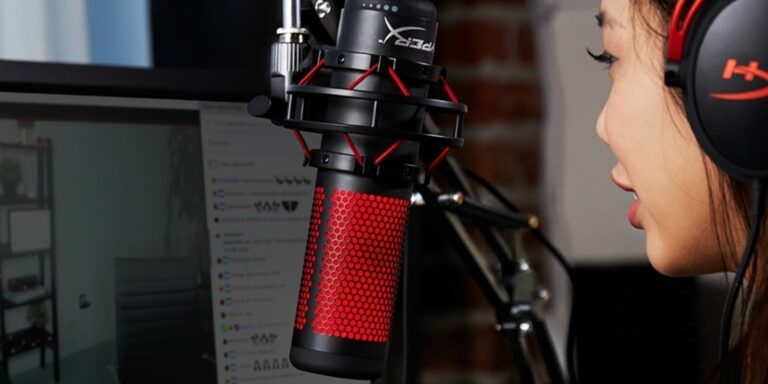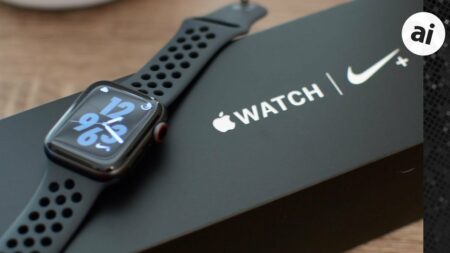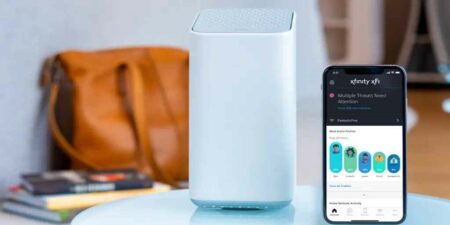Dslr microphone and Investing in a nice USB or XLR microphone is one of the first steps if you want to broadcast, podcast, or record gaming videos for YouTube. The added audio quality, noise reduction, and control you need to create great content may be found in these mics, which you won’t frequently find in your typical gaming headset microphone. Since there are so many options, we looked at the most popular USB and XLR microphones to find the best ones. The best Dslr microphone for streaming, the best for recording voiceovers or podcasts, and the greatest value are the three categories into which we’ve divided our recommendations. For XLR microphones, there is a distinct category since they are of a different kind. We also chose a useful attachable mic that is better than the mics that come with most gaming headsets but are still easy to use. Since we’re concentrating on inexpensive options for individuals just starting out in content production rather than genuinely professional-grade solutions, which may cost hundreds or even thousands of dollars, all of our options have a suggested retail price of less than $200/£200. Finally, we chose runners-up in a few categories to highlight deserving alternatives that some people might choose. Let’s move on to the choices now that it has been cleared up. We’ll start with a quick rundown of our top five picks. To read our picks in their entirety, scroll down or click the links below to jump to that entry.
13 Best Dslr Microphones For Gaming 2022
These are the thirteen Dslr microphones for gaming, which are as follows:
#1. Antlion Audio ModMic USB
- The best audio quality in the industry, available in 3.5mm, USB, or wireless variants.
- Almost any gaming headset or headphones may have this feature added.
- It just needs a little basic setup.
Tech insiders have long endorsed the Antlion ModMic, and after evaluating the ModMic Uni, ModMic USB, and ModMic Wireless, it’s clear why: these Dslr microphone sound superior to almost every headset microphone on the market. Using a little bit of glue, each can be attached to almost any pair of headphones. There are a few additional pieces of adhesive in the box in case you decide to switch the mic to a different headset in the future. The majority of the mic can be removed as required, leaving only the little magnetic base you placed it on.
The main area where the mics vary is in how they connect to your PC or gaming console. Like the ModMic 4 and ModMic 5 before it, the ModMic Uni has a 3.5mm port, while the ModMic wireless utilizes Bluetooth AptX Low Latency, which lasts for roughly twelve hours before needing to be recharged. The ModMic USB is the most advanced version. It connects to PS4 and PC via USB and allows Antlion to add its own sound processing to improve audio quality.
The ModMic Uni is the best option if you’re on a tight budget since it offers significantly higher audio quality than any headset mic we’ve tested. Additionally, we recommend it for Xbox users and PC owners with powerful sound cards or headphone amplifiers. The ModMic USB offers superior sound performance, making it a worthwhile upgrade for PS4 or PCs with onboard audio. Finally, the ModMic Wireless works best with wireless headsets since it keeps the connection for gaming completely cable-free while allowing you to recharge both the headset and the microphone at the same time.
#2. TC-Helicon GoXLR / GoXLR Mini
- A straightforward audio interface and mixing solution in one.
- It has a practical selection of ports, faders, and buttons.
- reasonable, although individual parts might be less expensive.
The GoXLR offers up to 70dB of gain to drive nearly all Dslr microphones on the market and 48V of phantom power for XLR microphones, making it the most practical all-in-one audio interface we’ve tested for streamers. The GoXLR is more expensive than a less complex audio interface of comparable quality, but it has far more hardware controls, such as faders, buttons, and knobs. After taking into account the performance benefits of mixing and routing with hardware instead of software, you’re left with a package that’s hard to resist.
A robust and even somewhat straightforward-software package supports the amazing audio hardware and controls by enabling microphone adjustments and other processing to maintain your voice’s desired tone. Additionally, you may change the way that audio is sent to any of the unit’s numerous USB audio devices. You could, for instance, assign your chat to one audio device, your mic to another, and so on. If that’s your thing, you may also set up a variety of entertaining voice samples and effects. Finally, it has changeable illumination, which also makes it a wonderful visual addition. Dslr microphone and Investing in a nice USB or XLR microphone is one of the first steps if you want to broadcast, podcast, or record gaming videos for YouTube.
The smaller GoXLR Mini is a lot better value for the money, even though the larger GoXLR is still remarkable. On the Mini, the connections and processing hardware are unaltered, although you do lose the sample and effects controls from the right side. Since these are the least important parts, and the price difference between them is big, they are a pretty good compromise.
#3. NZXT Capsule
It’s really easy to use, plug & play, and requires no software.
Although not the clearest we’ve heard, the audio pickup is detailed.
There is no quick method to see gains.
With plug-and-play functionality and no software to complicate matters, the NZXT Capsule strives for simplicity. In some ways, this is wonderful because it allows you to start recording right away after just connecting the microphone via USB, checking your levels in your preferred streaming app while adjusting the gain. It also means that you aren’t given the choice of alternative pickup patterns to accommodate a larger range of use cases, and sometimes it’s comforting to have software for your new device that enables you to install firmware updates, verify the current settings, and other things.
The white capsule’s minimalist design, which pairs well with NZXT’s selection of cases, motherboards, and accessories like the Boom Arm, is one of my favourites (linked below). There is no way to see how much gain you’ve made because the dial spins endlessly and there is no lighting or software readout as there is with the HyperX Quadcast or Roccat Torch, and you have to remember which dial does what because the symbols on it are meaningless and impossible to read from a distance. At least the Capsule is well made, which is what you’d expect from a $130/£110 product.
The desk stand is solid; a 3/8-inch adapter is provided for boom arms; and the sound collected is highly detailed and needs little processing, which, thankfully, makes up for the little annoyances. NZXT’s tuning here should be improved because other DSLR microphones sound better right out of the box, but for casual streamers, it’s a simple upgrade from a headset mic or a cheap USB mic. As far as I’m aware, this is NZXT’s first audio product, so maybe version two can address some of these minor problems while maintaining the same level of plug-and-play simplicity.
#4. HyperX SoloCast
Another choice is the recently announced HyperX SoloCast, which is now accessible in both the US and the UK. This microphone only gives one cardioid pattern, as the name would imply, as opposed to the four included in the more costly QuadCast. Dslr microphone and Investing in a nice USB or XLR microphone is one of the first steps if you want to broadcast, podcast, or record gaming videos for YouTube. The mic is slightly less adaptable as a result, but the audio quality is still decent and the tap-to-mute feature from the original mic is still available. Here, the overall design is more understated and there is only one red LED to signal the status of the microphone, which helps it blend in a little better on video. For optimal results, use the bottom screw mount with a mic arm as the provided stand is relatively short. Overall, a good choice is given its asking price of £65.
#5. Trust GXT 258 Fyru
live monitoring, as well as practical pattern, gain, and volume adjustments.
With LED surround illumination, its look is cool and streamer-friendly.
For European consumers, a good and less expensive substitute for Blue Yeti is
While the Blue Snowball is a fantastic low-cost option, the Trust GXT 258 Fyru is another excellent alternative that occasionally appears on sale for under £75. It offers a choice of four recording patterns, unlike the Snowball, making it simple to record in an interview or group podcast style. The best Dslr microphone for streaming. The best for recording voiceovers or podcasts. On the top of the mic, a clear indication of the current pattern is provided by illuminated LEDs, which indicate active microphones. Additionally, the sheath has some LED illumination, which looks interesting in pictures or onstream without being very obtrusive. Additionally, there are gain adjustments and live 3.5mm monitoring, which is convenient. The Dslr microphone comes with a straightforward desk stand that functions nicely. It may also be mounted on any arm using a common thread mount. There is a lot to appreciate about this, not least of which is the audio quality, which is comparable to that of the Yeti.
#6. Blue Snowball Ice
- Excellent audio for the price.
- USB plug-and-play functionality
- There are no controls or additional features.
The Blue Snowball Ice is the recording upgrade that will give you the greatest value for your money if you just have $50 or £50 to spend. Dslr microphone and Investing in a nice USB or XLR microphone is one of the first steps if you want to broadcast, podcast, or record gaming videos for YouTube. The best Dslr microphone for streaming. The best for recording voiceovers or podcasts. This older desk mic offers surprisingly high audio quality for recording narration for a video or launching your streaming career. It’s also simple to use; all you have to do is connect it in and press the record button; no software or other hardware is required. With only one recording pattern on the less expensive Ice model, you do, however, lose out in terms of functionality compared to the more expensive suggestions on our list.
#7. 512 Audio Limelight
Another more affordable version of the dynamic XLR Shure SM7B mic with a warm, broadcast-friendly sound is the 512 Audio Limelight. When you’re too close to The Limelight, the sound can get a little boomy, but if you move back a little, the music becomes lovely and deep and dark, which is a perfect illustration of the proximity effect in action. The microphone has two modes—”flat” and “low cut”—but the second option doesn’t sound as good as the first and doesn’t work at all with my voice. The mode option is easy to leave alone because the default 360-degree grip makes it impossible to reach. The best Dslr microphone for streaming. The best for recording voiceovers or podcasts. Like another dynamic Dslr microphone, it doesn’t need phantom power and performs better than condenser microphones at recording solely on-axis sound. Although the Limelight is certainly worthy of consideration, the PreSonus PD70 currently feels like the superior bargain because it offers better out-of-the-box sound without as much handling noise at a cheaper price point. As always, we advise reading a variety of evaluations and articles to obtain a full picture of this exciting debut microphone from a brand-new audio company.
#8. Audio-Technica AT2020
As an excellent condenser substitute for the PD-70, the AT2020 is a well-liked entry-level XLR microphone that has the potential for really clean audio if you’re prepared to put up the required setup. You will need to supply at least an XLR cable, a stand, and an audio interface or mixer that offers at least 48V of phantom power, as the only items included in the box are the microphone, a bag, and a stand adaptor. Your reward will be warm, clear audio that is perfect for recording podcasts or video voiceovers after all of these elements are in place. It’s important to note that the AT2020 is pretty heavy and leans more “professional” than “gamer” in terms of appearance, but that’s okay. Condenser microphones provide clearer speech reproduction than dynamic microphones like the PD-70, but they also take up far more off-axis noise like mouse clicks and keyboard clatter, so keep that in mind if you’re using this for streaming rather than voiceover production.
#9.PreSonus PD-70 amazon
Clear, crisp audio with excellent off-axis noise rejection.
The tidy and expert appearance enables access to the formidable but complicated XLR ecosystem.
The £96 or $100 PreSonus PD-70 is the top gaming XLR microphone that we have yet to test. It is a dynamic mic, not a condenser, so it records a bit less detail but has far better off-axis noise rejection, which is perfect for streaming or recording in a crowded setting where you might have to compete with other people’s vocal effluence or the clatter of mechanical keyboards. The best Dslr microphone for streaming. The best for recording voiceovers or podcasts. The PD-70 is well-made, with a polished, businesslike appearance that is reminiscent of the well-known Shure SM7B and has a detachable windscreen that helps to cut down on sibilance and plosives. It boasts a bright sound signature that enhances vocal clarity and minimizes low rumbling background noise, and it sounds fantastic right out of the box as well. Naturally, you are free to adjust the microphone using the audio interface or software you’ve selected for the rest of the chain to make it acceptable for both low and high voices. I also discovered that it was a bit simpler to position in a desk-based streaming arrangement because it can just protrude from above or to the side of a display and doesn’t obstruct much of your peripheral vision as a side-address Dslr microphone does. Given how cheap it is, it’s definitely something to think about if you want to stream games in a normal, sometimes noisy environment.
#10. Epos B20
Despite costing about twice as much as the Blue Yeti and even more than the Yeti X, the premium Epos B20 has several drawbacks in addition to its stunning appearance and impressive list of features. It is a four-pattern mic with latency-free monitoring and the versatility to be used for VO, streaming, podcasting, or even music recording, much like other Blue Yeti rivals. The sound is clear, but a touch thin compared to other USB microphones I’ve used. If you’re in a noisy environment or using a mechanical keyboard, you’ll also pick up a lot of background noise, much like with other condenser microphones. With a dark grey metal design and white status lights that feel much more “adult” than mics like the HyperX QuadCast, I could certainly see streamers choosing the B20 over mics like the HyperX QuadCast. After installing a firmware update, it also works on the PS5, which is a nice bonus.
#11. Trust Gaming GXT 259 Rudox
The Blue Yeti X is a good competitor to the Trust Gaming GXT 259 Rudox, which excels for voiceover or solo podcasting. You only get one pattern here, as opposed to the Yeti X’s four, but you do receive a mic stand and shield that perfectly complement the mic’s single purpose. The best Dslr microphone for streaming. The best for recording voiceovers or podcasts. The shield reduces one of the greatest drawbacks of condenser microphones by making it difficult to detect background noise, enabling rich information to be recorded without interruption. It is simple to fine-tune the sound you want thanks to the remainder of the kit, particularly direct zero-latency monitoring and a good selection of knobs on the front and back of the mic. If you live in the UK and don’t plan to use this microphone with more than one person or put it in front of a computer screen, the GXT 259’s more focused design will definitely help you.
#12. Røde NT-USB Mini
For its £100/$100 price tag, the Rode NT-USB Mini is a little USB microphone with a short stand but great audio quality. Rode has concentrated on capturing the best audio they can directly in front of the mic rather than providing a variety of recording patterns, as with the Blue Yeti. Most of the time, these recordings put more focus on the mid-range in a way that sounds good with acoustic instruments or, luckily for us, with human speech. The best Dslr microphone for streaming. The best for recording voiceovers or podcasts.
Because of its emphasis on simplicity, this Dslr microphone is really plug-and-play. It doesn’t require a gain knob or polar pattern selection and works with Windows, Mac, Android, and iOS through full-size USB or USB-C. Zero-latency monitoring via 3.5mm is a very useful bonus function included in the NT-USB Mini, which is perfect for fine-tuning your sound before going live. The provided desk stand is fairly short, so we do suggest purchasing a cheap desk mount to ensure that your dulcet tones—rather than the mechanical clatter of your keyboard—are being recorded. Overall, a superb low-profile microphone that sounds amazing and is simple to use.
#13. Roccat Torch
The Roccat Torch, with its clear audio and well-thought-out features, is the second-best USB microphone we’ve discovered for streaming. With three recording options and a tactile gain slider, the mic may be easily adjusted for a single audio source or several voices. Even a “whisper” setting is available, which increases gain if you want to speak quietly yet still be heard. In this situation, there are two ways to stop the sound at once: either flick the volume knob on the base of the mic or wave your hand in front of the Dslr microphone. You may observe the current settings at a glance without using any additional software thanks to the RGB effects that match the pickup pattern, gain, and mute. Other useful features include lag-free audio monitoring and an inbuilt pop filter that prevents obnoxious pops from being produced by p and b sounds. The only major issue is that the included stand is a touch short, and the included setup necessitates the use of two USB cables: one to connect the mic to the base and the other to your PC. Although it doesn’t look or feel as clean as other USB microphones, I can see why Roccat chose to do this because it allows the mic and base to be used together or separately.
FAQ
What systems can I use these microphones with?
USB Dslr microphones work pretty much right out of the box on Windows, macOS, and PS4, but XLR microphones need an adaptor or interface with a USB output to do the same thing. Unfortunately, the Xbox One does not support USB microphones.
Which is preferable, XLR or USB?
A USB microphone is the best option if you only intend to use one mic on your computer because it is plug-and-play and doesn’t require any additional hardware. XLR microphones require an audio interface to connect to, but this also opens up the possibility of using mixers or additional microphones. If you’re just getting started, USB is the best option, whereas XLR may be preferable for devoted multimedia makers who want the room to expand into more sophisticated setups. If you have an XLR microphone but don’t have a full audio interface yet, you can also use a simple XLR-to-USB converter.

















